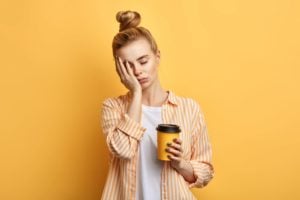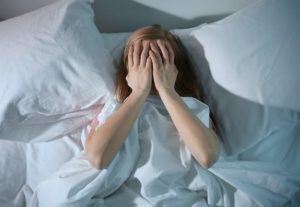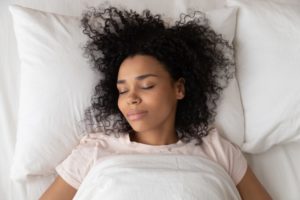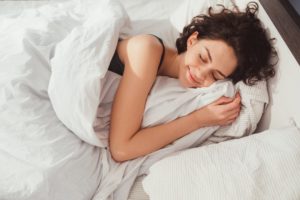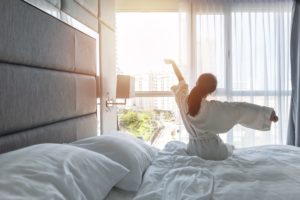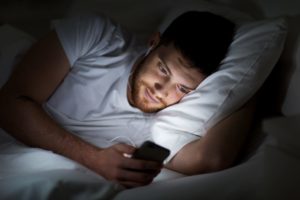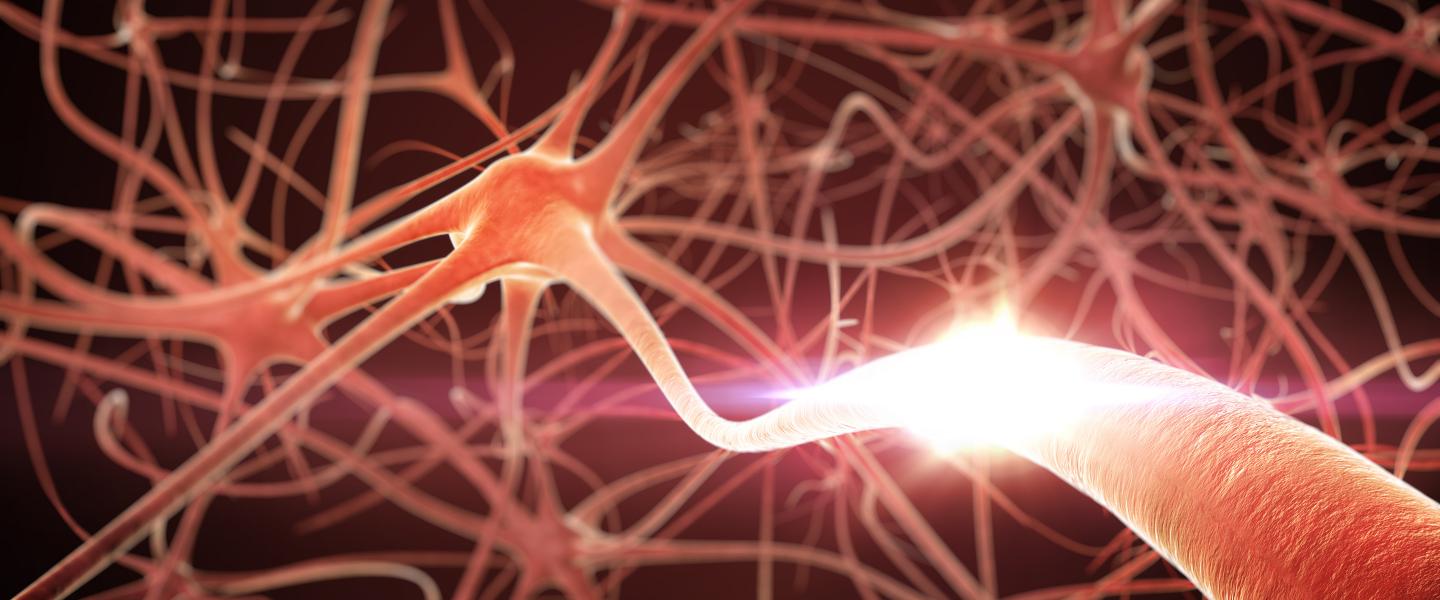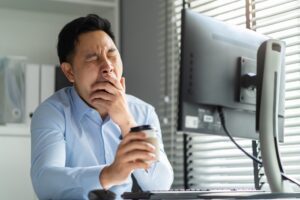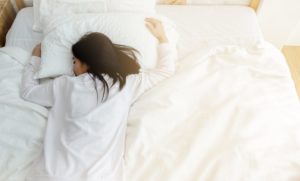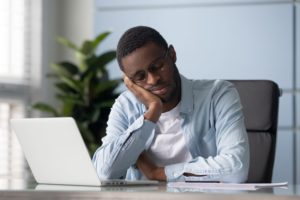Sleep Latency
Sleep latency is the technical term for the length of time it takes you to fall asleep . Different people fall asleep in different amounts of time, but a normal sleep latency generally hovers between 10 and 20 minutes . Sleep latency is an important measure because it can reflect a person’s overall sleepiness and provide insight into sleep quality.
We will take a closer look at sleep latency and how it relates to other characteristics of sleep, such as sleep efficiency, sleep phases, and sleep debt. We will also detail which tests measure sleep latency, who needs them, and when to contact your doctor.
What Is Sleep Latency?
Sleep latency, or sleep onset latency, is the time it takes a person to fall asleep after turning the lights out. On average, a healthy person takes between 10 and 20 minutes to fall asleep. While different people experience different sleep latencies, an extremely short sleep latency of less than eight minutes indicates increased sleepiness and could be the result of sleep deprivation or poor sleep due to an underlying sleep disorder.
A single individual can experience variations in sleep latency, depending on how sleepy they are. For example, if a person tries to go to bed earlier than normal, they might experience a longer sleep latency. Since they are not as tired, they take longer to fall asleep. Conversely, if a person stays up later than normal, they are likely to experience a shorter sleep latency due to being more tired than usual.
A variety of other factors can also affect sleep latency. Alcohol, for example, reduces sleep latency. By contrast, chronic pain may interfere with a person’s ability to sleep. Different medications impact sleep latency, reducing or increasing the time it takes to fall asleep depending on their effects. The “first night effect” is a phenomenon in which a person has trouble sleeping on their first night in a new place. A person’s age and the number of naps they take may also affect sleep latency.
Relationship to Sleep Efficiency
When sleep professionals talk about sleep efficiency, they are generally referring to the percentage of time a person spends asleep at night. To calculate this, they take a ratio of the total amount of time a person was asleep on a given night divided by the total amount of time they spent in bed , then multiply that by 100 to create a percentage. When treating insomnia, doctors usually aim for a sleep efficiency of at least 85%.
Sleep efficiency is a different measure than sleep latency, but the two are closely linked. Both measures can provide insight into how well a person is sleeping, as a longer sleep latency can lead to a lower sleep efficiency. However, having a high sleep latency, or taking a long time to fall asleep, is not the only factor that impacts sleep efficiency. A person can also have a low sleep efficiency due to waking up throughout the night or early in the morning.

Relationship to Sleep Stages
Each night, a person cycles through multiple stages of sleep . These four stages are broken up into two categories: rapid eye movement (REM) and non-rapid eye movement (NREM) sleep. Stages 1 through 3 are NREM sleep, while stage 4 is REM sleep. NREM accounts for the majority of time spent asleep. REM sleep tends to involve more dreaming, as well as brain activity similar to what’s seen during wakefulness. The first half of the night tends to feature more deep sleep, while the second half features more REM sleep.
A full sleep cycle takes about 90 to 120 minutes to complete. A longer sleep latency can delay the moment when you enter your first sleep stage. If you have limited time in bed, then taking too long to fall asleep might prevent you from completing as many sleep cycles, and you might fail to receive enough REM sleep. Sometimes, the body compensates for this effect by spending a higher percentage of time in REM sleep during the next sleep period. This phenomenon is called REM rebound .
Sleep latency also affects REM latency, another measurement related to sleep stages. REM latency measures how long after it takes a person to reach their first REM sleep stage after turning the lights out. Therefore, the REM latency measure includes the sleep latency measure. The longer it takes a person to fall asleep, the longer it takes them to reach their first REM sleep stage. A REM latency that is shorter or longer than usual may be caused by medication, sleep deprivation, or sleep disorders.
Influence of Sleep Debt on Sleep Latency
Since sleep latency is related to tiredness, the measure is also influenced by sleep debt. Sleep debt refers to how much sleep you have missed. For example, if you require eight hours of sleep at night but you only receive six hours, your sleep debt is two hours. Sleep debt accumulates across multiple nights, and it can negatively impact a person’s physical health and cognitive ability.
People are not always aware of the cognitive problems caused by their sleep debt, nor do they always feel sleepy while experiencing sleep debt. Measuring sleep latency can help identify when sleep debt is at play. Even if subjective feelings of tiredness are not present, a person generally falls asleep faster when they need sleep. People with very short sleep latencies are likely experiencing sleep debt.
Why Sleep Latency Is Important
Sleep latency is important because it helps indicate whether you are getting sufficient quality sleep. People do not always feel tired or recognize how sleep deprivation affects them. Objective sleep measures like sleep latency can provide a more accurate picture of how well a person is meeting their sleep needs.
Whereas a sleep latency of less than eight minutes could indicate a sleep disorder like narcolepsy, people who take more than 20 minutes to fall asleep could have insomnia or another factor interfering with their ability to fall asleep. The American Academy of Sleep Medicine cautions that sleep latency is just one measure that should be used in conjunction with other criteria when assessing a person for a possible sleep disorder.
Tests Measuring Sleep Latency
Three common sleep tests measure sleep latency: the multiple sleep latency test (MSLT), the maintenance of wakefulness test (MWT), and polysomnography.
Multiple Sleep Latency Test (MSLT)
The multiple sleep latency test (MSLT) is commonly given to people experiencing excessive daytime sleepiness. Since it’s difficult to properly self-assess your own level of tiredness or sleep deprivation, the MSLT provides an objective measure. Undergoing an MSLT is part of the diagnostic process for both narcolepsy and idiopathic hypersomnia.
The MSLT involves giving a sleeper opportunities to take four or five daytime naps about two hours apart. Researchers measure how long it takes the person to fall asleep. If the person does not fall asleep within 20 minutes, that nap is canceled and the sleep latency is recorded as 20 minutes. If the person does fall asleep, testers record brain activity for the next 15 minutes, with a special focus on whether participants reach REM stage during their naps.
Multiple factors can influence results of a multiple sleep latency test, including recent sleep deprivation, medication use, and activity level. For this reason, an MSLT is generally performed the day after an overnight sleep study , known as polysomnography. Polysomnography can rule out other sleep disorders and show whether or not the sleeper received adequate sleep the night before the MSLT.
Healthy people who do not have a sleep disorder have an average sleep latency of approximately 10 minutes across their multiple sleep latency test naps. People with narcolepsy have an average sleep onset latency of eight minutes or less, and they are more likely to enter the REM stage during these naps. Similarly, people with idiopathic hypersomnia also have an average sleep onset latency of less than eight minutes, though they are less likely to enter REM sleep.
Maintenance of Wakefulness Test (MWT)
Somewhat the opposite of the multiple sleep latency test, the maintenance of wakefulness test (MWT) aims to see how long a person can resist sleep. Doctors may prescribe the test if they suspect you have a sleep disorder that is causing excessive sleepiness, such as sleep apnea or narcolepsy.
In the most common version of the MWT, participants are seated upright in bed in a dimly lit room and told to sit still and stay awake for as long as possible. An EEG records the person’s brain waves so researchers can analyze sleep latency as well as total sleep time and sleep stages. The trial lasts 40 minutes and is repeated four times at two-hour intervals during normal waking hours.
On average, most participants take around 30 minutes to fall asleep. It is common for people to remain awake for the entire study, but taking less than eight minutes to fall asleep is considered abnormal.
Polysomnography Test
Polysomnography (PSG) is an overnight sleep study often given the night before a multiple sleep latency test. Sleep studies are conducted in-person, generally in a hospital or sleep center. They collect multiple measures, including data on brain activity, airflow, chest and abdominal movements, blood oxygen levels, pulse, leg movements, and snoring volume.
Sleep latency is also recorded during polysomnography. Sleep latency measurement begins when the technician turns out the lights in the sleeper’s room. The measurement stops when an electroencephalograph (EEG) reading shows that the sleeper’s brain waves indicate sleep rather than wakefulness.
A person’s sleep habits in the days leading up to polysomnography or a multiple sleep latency test are important. If someone sleeps much more or less than normal, or if they sleep at unusual times, their sleep latency could be shortened or lengthened as a result. For this reason, practitioners often ask sleepers to keep a sleep diary and record their sleep habits in the days leading up to the sleep study.
When to Contact Your Doctor
If you believe you might have a sleep disorder, whether because of the time it takes you to fall asleep or another reason, contact your doctor. Your doctor can ask you questions and order tests to determine what is causing your symptoms. If they identify a sleep disorder or other medical disorder, your doctor can prescribe medication or help you find other ways to manage your sleep-related concerns.

Still have questions? Ask our community!
Join our Sleep Care Community — a trusted hub of product specialists, sleep health professionals, and people just like you. Whether you’re searching for the perfect mattress or need expert sleep advice, we’ve got you covered. Get personalized guidance from the experts who know sleep best.
References
14 Sources
-
Shrivastava, D., Jung, S., Saadat, M., Sirohi, R., & Crewson, K. (2014). How to interpret the results of a sleep study. Journal of Community Hospital Internal Medicine Perspectives, 4(5), 24983.
https://pubmed.ncbi.nlm.nih.gov/25432643/ -
Jung, D. W., Hwang, S. H., Chung, G. S., Lee, Y. J., Jeong, D. U., & Park, K. S. (2013). Estimation of sleep onset latency based on the blood pressure regulatory reflex mechanism. IEEE journal of biomedical and health informatics, 17(3), 534–544.
https://pubmed.ncbi.nlm.nih.gov/24592456/ -
Littner, M. R., Kushida, C., Wise, M., Davila, D. G., Morgenthaler, T., Lee-Chiong, T., Hirshkowitz, M., Daniel, L. L., Bailey, D., Berry, R. B., Kapen, S., Kramer, M., & Standards of Practice Committee of the American Academy of Sleep Medicine (2005). Practice parameters for clinical use of the multiple sleep latency test and the maintenance of wakefulness test. Sleep, 28(1), 113–121.
https://pubmed.ncbi.nlm.nih.gov/15700727/ -
Reed, D. L., & Sacco, W. P. (2016). Measuring sleep efficiency: What should the denominator be? Journal of Clinical Sleep Medicine, 12(2), 263–266.
https://pubmed.ncbi.nlm.nih.gov/26194727/ -
Schwab, R. J. (2020, June). Merck Manual Consumer Version: Overview of Sleep., Retrieved July 14, 2021, from
https://www.merckmanuals.com/home/brain,-spinal-cord,-and-nerve-disorders/sleep-disorders/overview-of-sleep -
Feriante, J., & Singh, S. (2021). REM rebound effect. In StatPearls. StatPearls Publishing.
https://pubmed.ncbi.nlm.nih.gov/32809548/ -
Banks, S., Van Dongen, H. P., Maislin, G., & Dinges, D. F. (2010). Neurobehavioral dynamics following chronic sleep restriction: dose-response effects of one night for recovery. Sleep, 33(8), 1013–1026.
https://pubmed.ncbi.nlm.nih.gov/20815182/ -
Spiegel, K., Leproult, R., & Van Cauter, E. (1999). Impact of sleep debt on metabolic and endocrine function. Lancet (London, England), 354(9188), 1435–1439.
https://pubmed.ncbi.nlm.nih.gov/10543671/ -
Van Dongen, H. P. A., Maislin, G., Mullington, J. M., & Dinges, D. F. (2003). The cumulative cost of additional wakefulness: Dose-response effects on neurobehavioral functions and sleep physiology from chronic sleep restriction and total sleep deprivation. Sleep, 26(2), 117–126.
https://pubmed.ncbi.nlm.nih.gov/12683469/ -
Schwab, R. J. (2020, June). Insomnia and excessive daytime sleepiness (EDS). Merck Manual Consumer Version., Retrieved July 15, 2021, from
https://www.merckmanuals.com/home/brain,-spinal-cord,-and-nerve-disorders/sleep-disorders/insomnia-and-excessive-daytime-sleepiness-eds -
Arand, D. L., & Bonnet, M. H. (2019). The multiple sleep latency test. Handbook of Clinical Neurology, 160, 393–403.
https://pubmed.ncbi.nlm.nih.gov/31277864/ -
Ersu, R., & Proulx, F. (2020). Multiple sleep latency test. American Journal of Respiratory and Critical Care Medicine, 201(5), P9–P10.
https://pubmed.ncbi.nlm.nih.gov/32108527/ -
Schwab, R.J. (2020, June). Narcolepsy. Merck Manual Professional Version., Retrieved August 3, 2021, from
https://www.merckmanuals.com/en-ca/professional/neurologic-disorders/sleep-and-wakefulness-disorders/narcolepsy -
Schwab, R.J. (2020, June). Idiopathic hypersomnia. Merck Manual Professional Version., Retrieved August 3, 2021, from
https://www.msdmanuals.com/professional/neurologic-disorders/sleep-and-wakefulness-disorders/idiopathic-hypersomnia






